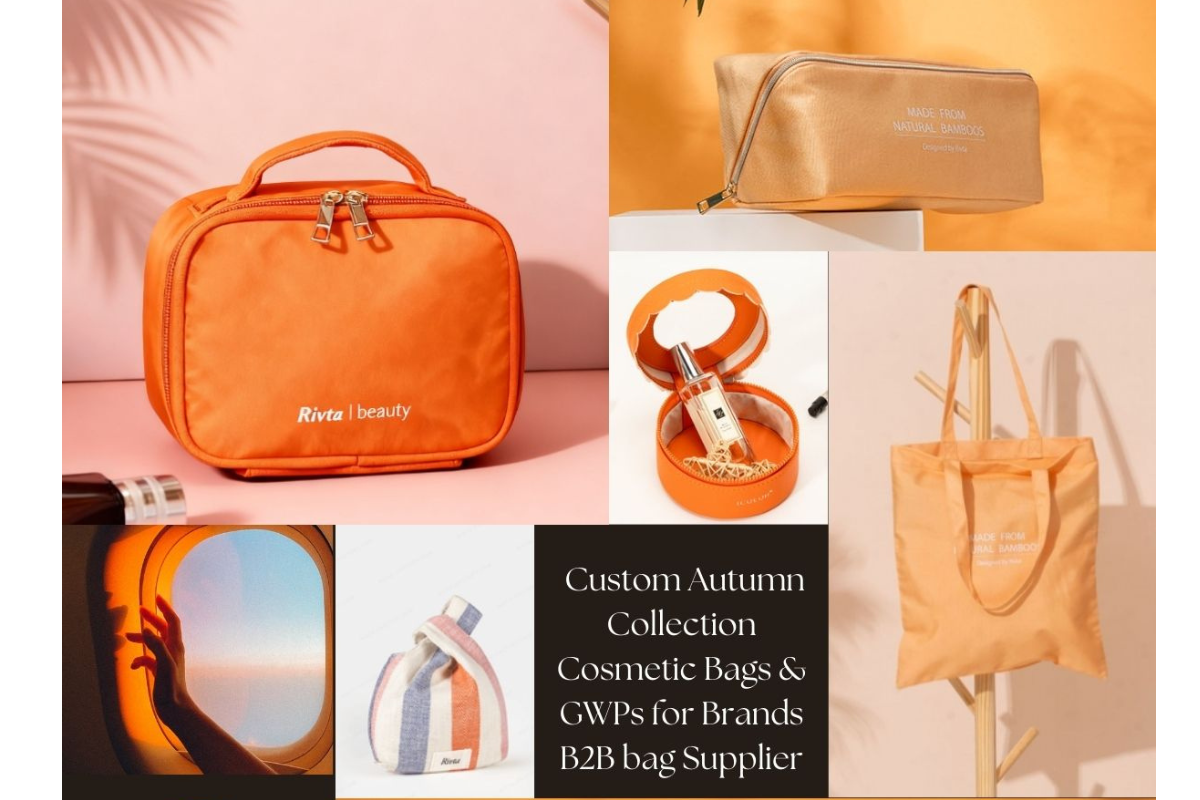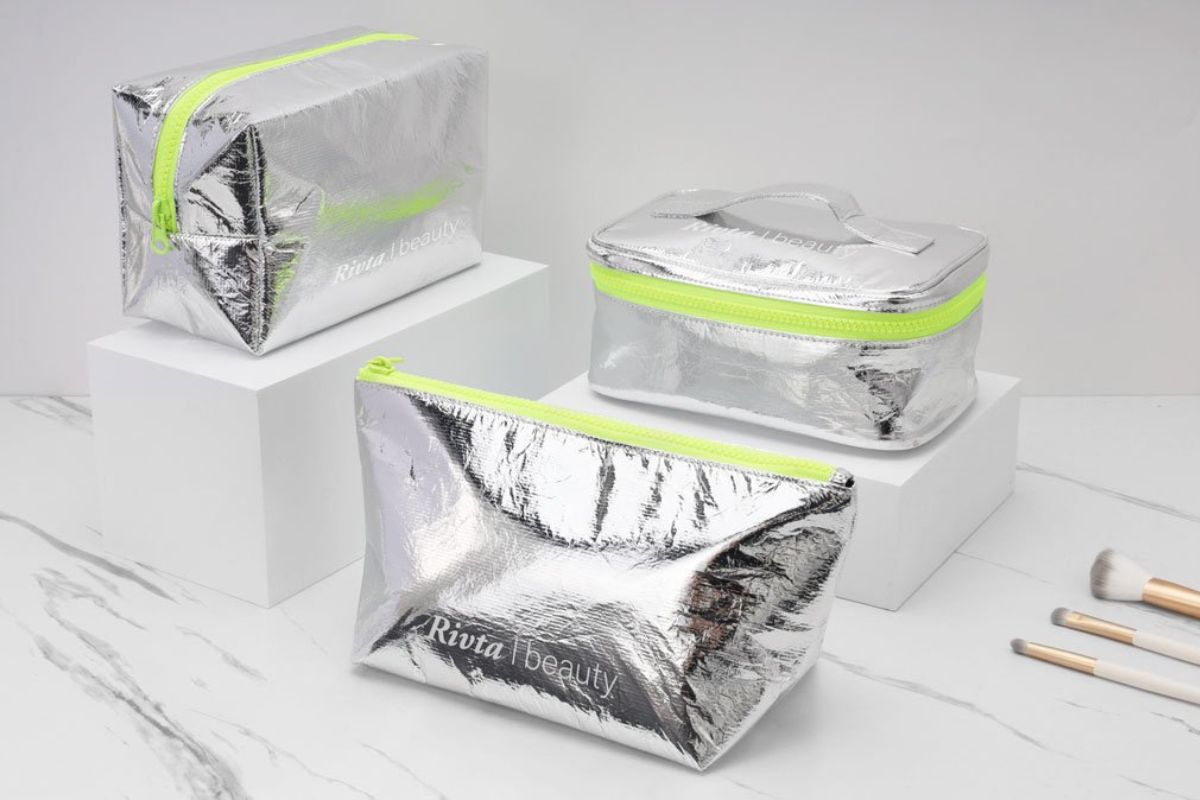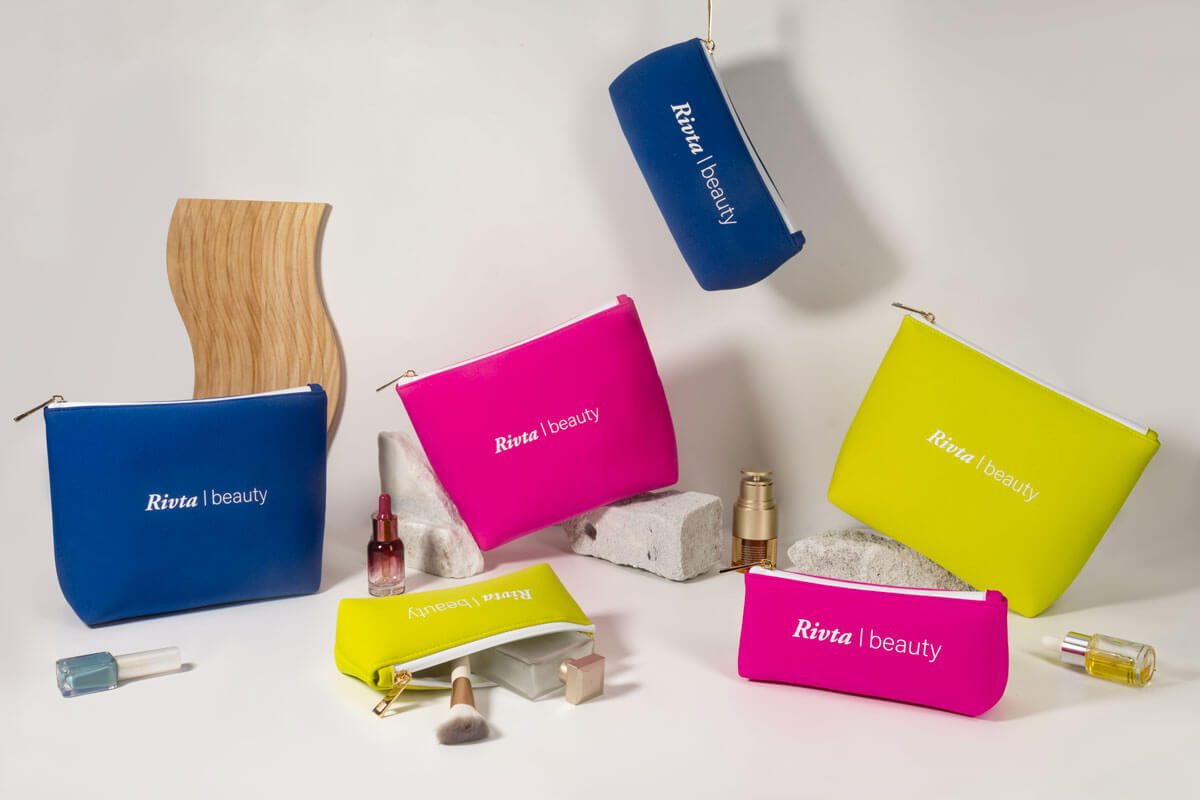How to Vet a Toiletry Bag Supplier: The 7-Point Checklist for Buyers?
Finding the right supplier for your brand can be a real headache. You need a partner who gets your vision and delivers on quality, but the search is often frustrating.
To properly vet a toiletry bag supplier, I use a 7-point checklist. This covers everything from assessing their manufacturing and quality control processes to verifying their ethical and sustainable certifications. It also involves checking their communication, sampling, and production capabilities to ensure they are a reliable partner for my brand.
I spend my days deep in product development, and I’ve learned that choosing a supplier is one of the most critical decisions you can make. The right one can elevate your product, but the wrong one can cause endless problems, from quality issues that disappoint customers to production delays that hurt your bottom line. I've been there, and it’s a situation no one wants to be in. Over my 15 years in the beauty industry, working with major players like a leading global beauty retailer and HCT Group, I've developed a solid system for finding partners I can trust. This isn't just about ticking boxes; it's about building a relationship that leads to amazing products people will love. Let’s walk through the steps I take to make sure a supplier is the right fit.
What are the toiletry bag requirements?
Thinking about what a toiletry bag truly needs can feel overwhelming. You want something that looks good but also has to be practical for your customers. It's a tough balance to strike.
A great toiletry bag must be durable, easy to clean, and well-organized. The material should be long-lasting and ideally waterproof to handle spills. Multiple compartments are also key to keeping everything neat and easy to find.
When I start developing a new toiletry bag, I don't just think about trends; I think about how it will feel in someone's hand and how it will fit into their life. The requirements go beyond just looking pretty. I’ve learned that the details are what make a product exceptional. For me, the journey begins with the material. As a brand committed to a "Green Future," we focus on innovative, eco-friendly options. I'm always looking for suppliers who are as passionate about sustainable materials as I am. This means looking beyond basic fabrics to recycled and biodegradable alternatives that don't compromise on quality. After all, a product designed to hold personal care items should also care for the planet. Here’s how I break down the core requirements for any toiletry bag I develop.
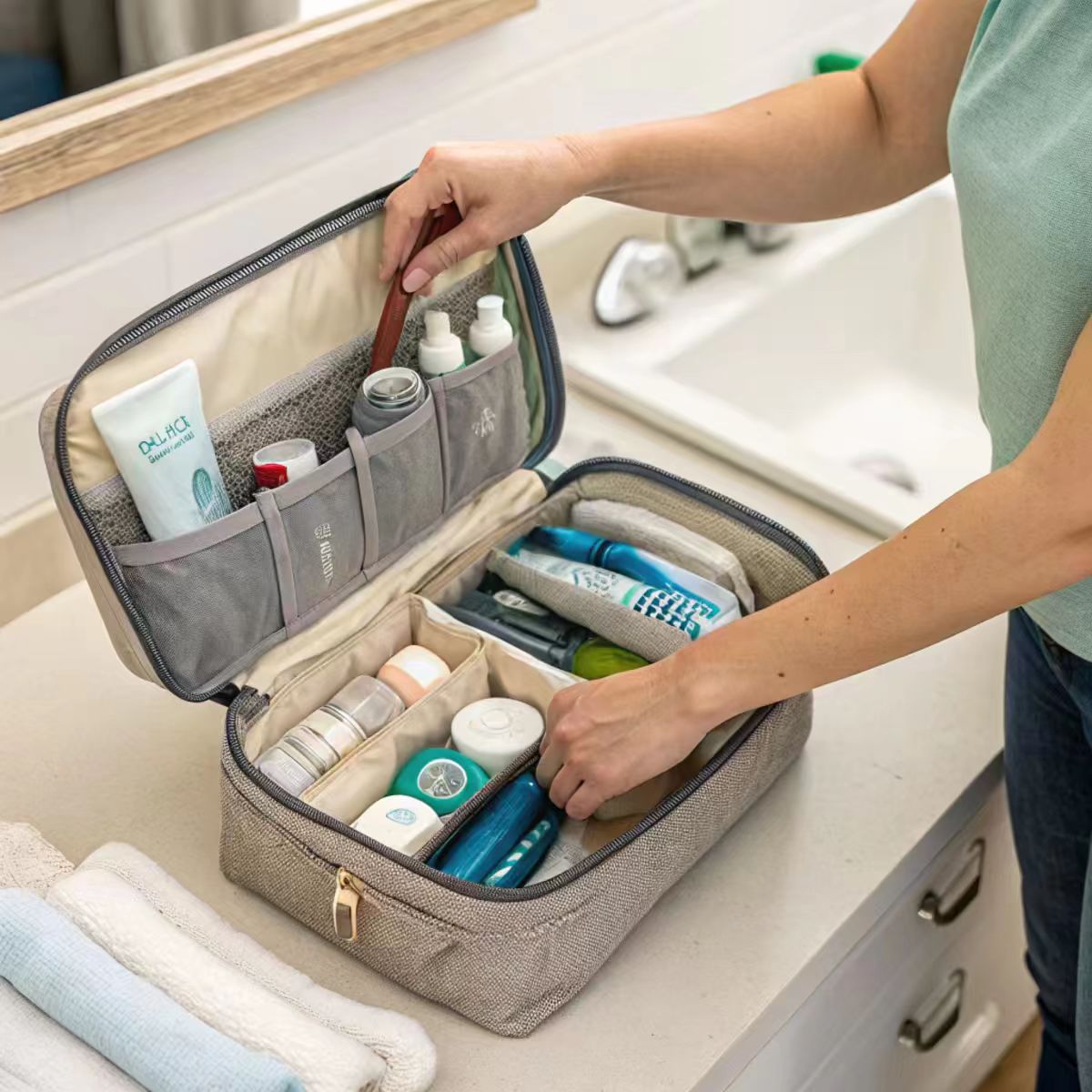
Material and Durability
The fabric is the foundation of the bag. It needs to be tough enough for travel but also align with our brand's sustainable mission. I look for suppliers who offer a range of eco-friendly materials like GOTS-certified organic cotton, recycled polyester, or even innovative biodegradable fabrics. Durability is non-negotiable; things like reinforced stitching and strong zippers make all the difference.
Functionality and Design
A toiletry bag has to be functional. This means thoughtful organization with different compartments to separate makeup, skincare, and other essentials. I always consider how people will use the bag. A hanging hook, for instance, can be a game-changer in a small bathroom. The design needs to be both stylish and practical, with easy-to-clean linings because spills happen.
Ethical and Quality Certifications
I need to trust that my suppliers operate responsibly. That's why I look for key certifications that prove their commitment to quality and ethical practices. Things like ISO 9001 for quality management and BSCI or SEDEX for social compliance are important. Since sustainability is at our core, I also prioritize certifications like the Global Recycled Standard (GRS) to ensure the materials are genuinely eco-friendly.
What should be in a toiletries bag?
Packing for a trip can be stressful, especially when it comes to deciding which toiletries to bring. You don't want to overpack, but you also don't want to forget anything important.
For a well-packed toiletry bag, I always start with the absolute must-haves: a toothbrush, toothpaste, deodorant, and face wash. From there, I add sunscreen, moisturizer, and any essential makeup or hair products, keeping everything travel-sized to save space.
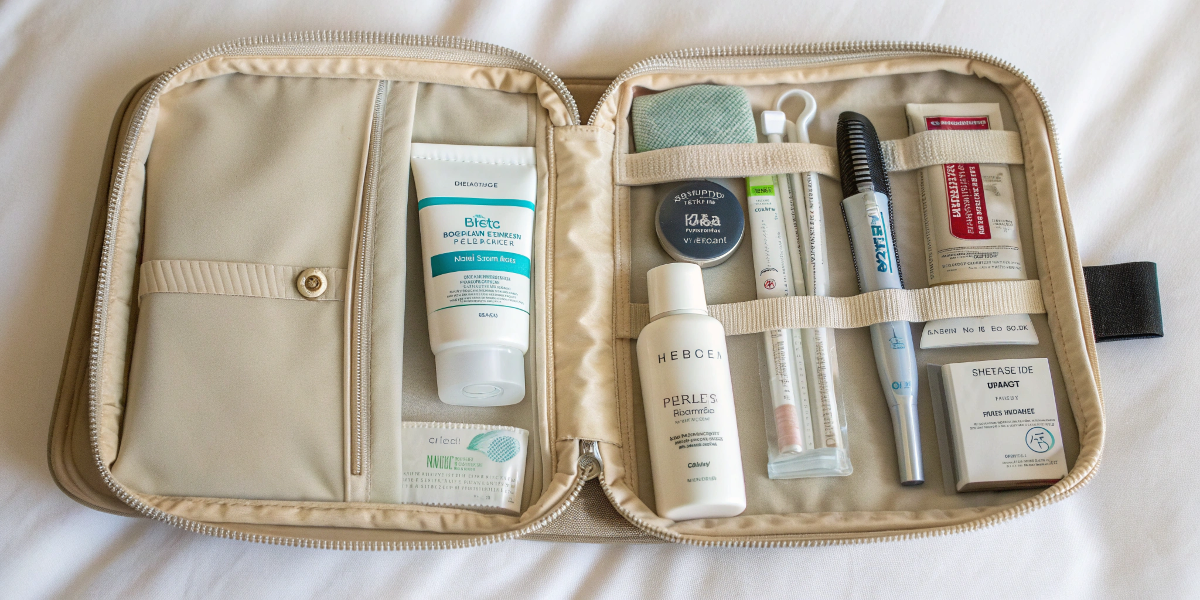
After years of traveling for work and countless product launches, I've perfected my packing list. It's all about finding that sweet spot between being prepared and not hauling around a bag that weighs a ton. My philosophy is to cover the basics for skincare, haircare, and personal hygiene, with a few extras that make me feel put together, no matter where I am in the world. I always think about the "what ifs," like a surprise meeting or a last-minute dinner, so I’m never caught off guard. Here’s a peek into what I consider essential, broken down by category. This list has saved me more times than I can count.
The Everyday Essentials
| Item | Reason |
|---|---|
| Toothbrush & Toothpaste | For obvious reasons. |
| Deodorant | A must for staying fresh. |
| Face Wash & Moisturizer | To keep my skin happy and hydrated. |
| Sunscreen | The most important anti-aging product, hands down. |
| Lip Balm | To prevent chapped lips, especially on long flights. |
Hair and Makeup
| Item | Reason |
|---|---|
| Bar Shampoo & Conditioner | These are eco-friendly and save so much space. |
| Basic Makeup | A good concealer, tinted moisturizer, and blush go a long way. |
| Makeup Remover Wipes | Quick and easy for late nights. |
Health and Wellness
| Item | Reason |
|---|---|
| Basic Medications | Pain relievers and any personal prescriptions. |
| Hand Sanitizer | For situations where soap and water aren't available. |
| Band-Aids | You never know when you'll need one. |
What is the difference between a dopp kit and a toiletry bag?
You've probably heard both terms used, but what's the actual difference? It can be confusing when you're just looking for something to carry your grooming essentials.
Essentially, a Dopp kit is a specific type of men's toiletry bag, often with a simpler, single-compartment design. "Toiletry bag" is a broader term that covers a wide variety of styles and organizational features for anyone.
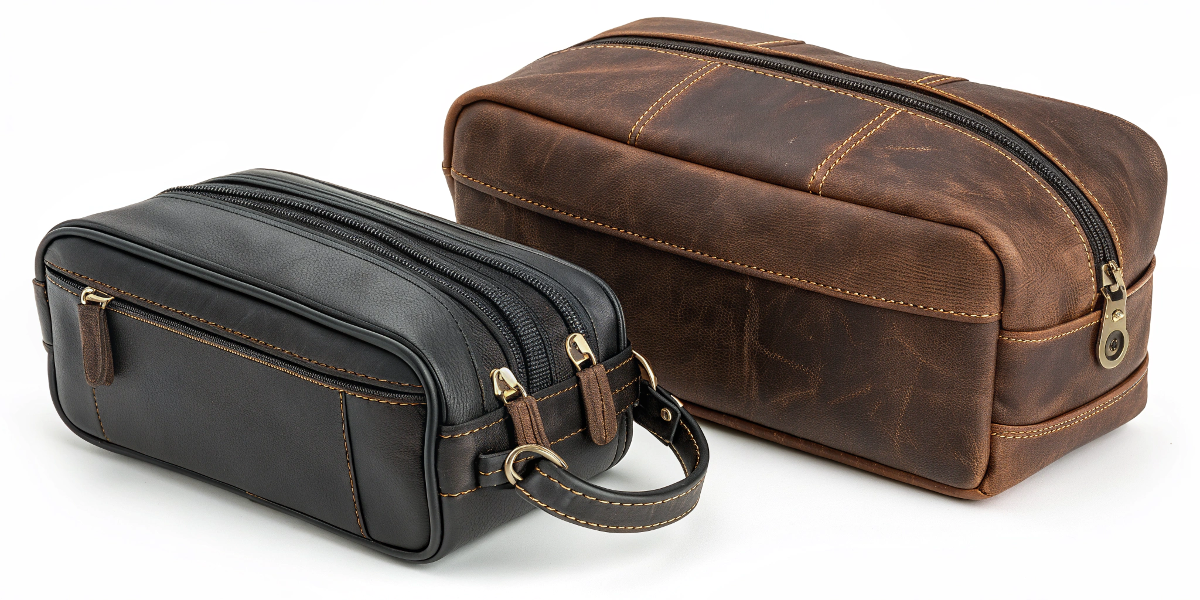
In all my years in product development, I’ve seen these terms used interchangeably, and honestly, the lines have blurred a lot. But understanding the history helps clarify the distinction. The "Dopp kit" has a cool story behind it. It was named after Charles Doppelt, a leather goods designer who created the bag in the early 20th century. It gained massive popularity after being issued to American soldiers during World War II. This history gives it a classic, masculine association that still holds today. When I'm designing, I think about this distinction. Is the target customer looking for something traditionally masculine and straightforward, or do they need a more versatile, feature-rich bag? This helps guide my design choices.
The Classic Dopp Kit
Think of the Dopp kit as the original. Its features are usually very straightforward.
- Design: Typically, it's a simple, single-compartment bag.
- Material: Often made from durable materials like leather or waxed canvas, giving it a rugged, timeless feel.
- User: Traditionally marketed towards men.
The Modern Toiletry Bag
The term "toiletry bag" is much more inclusive and covers a huge range of designs.
- Design: These can have multiple compartments, pockets, and hanging hooks for better organization.
- Material: They come in every material imaginable, from nylon and recycled fabrics to high-end textiles. This is where, as a product developer for Rivta, I get to innovate with sustainable options.
- User: Designed for everyone, with endless styles to match any need or preference.
So, while every Dopp kit can be called a toiletry bag, not every toiletry bag fits the classic Dopp kit description. It really comes down to the style and a bit of marketing history.
What is a fancy name for a toiletry bag?
Sometimes "toiletry bag" just doesn't sound chic enough, right? You're looking for a name that matches the style and quality of the product you're creating.
A more elegant name for a toiletry bag is a "wash bag." Other stylish alternatives include a "grooming case," "travel kit," or the French term "nécessaire," which adds a touch of luxury.
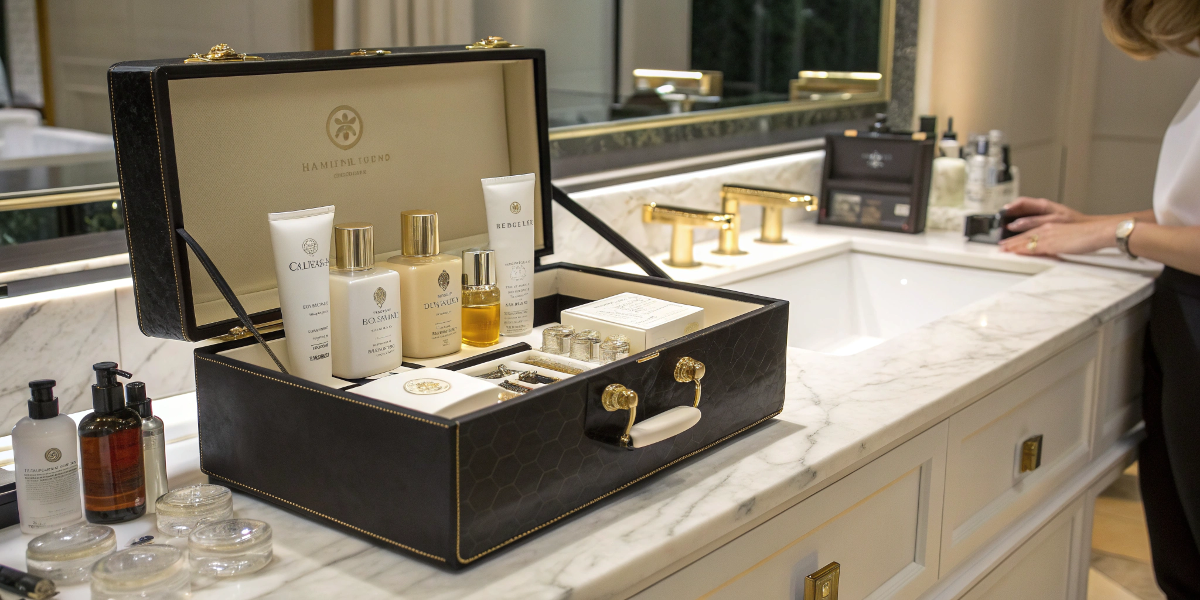
In the world of beauty and fashion, words matter. The name we give a product can completely change how people perceive it. When I'm working on a new collection, selecting the right name is a key part of the product development process. It's not just about what it's called; it's about the story and the feeling it evokes. Calling it a "nécessaire" automatically elevates it from a simple bag to a curated collection of essentials. It suggests sophistication and purpose. For our brand, which focuses on innovative materials and a green future, a name that reflects both style and substance is crucial. It’s about creating a product that people feel proud to own and carry. Here are some of the names I often consider, depending on the target audience and the product's aesthetic.
Classy and Sophisticated
These names suggest luxury and high quality.
- Nécessaire: French for "necessary," it implies carrying one's essential, high-quality items.
- Vanity Case: This evokes images of classic glamour and old Hollywood.
- Grooming Case: A polished and professional term, perfect for a high-end men's line.
Modern and Practical
These names are stylish but also hint at the bag's function.
- Wash Bag: A very common and stylish term, especially in the UK.
- Travel Kit: This name is straightforward and highlights the bag's purpose for travel.
- Utility Pouch: A modern, gender-neutral term that speaks to functionality and versatility.
Conclusion
Choosing the right supplier is vital for your brand's success. By using this checklist, you can confidently find a partner who aligns with your quality, ethical, and sustainable standards.

